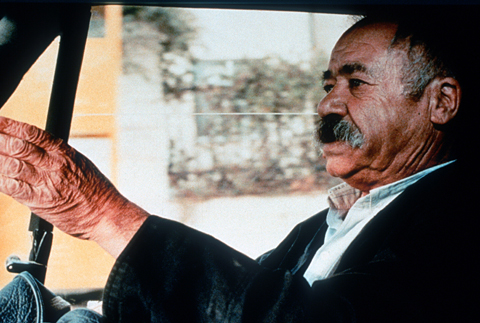This is my fifth column for Cahiers du Cinéma España, which ran in their February 2008 issue. Incidentally, any Americans who might still be skeptical about the multiracial and multicultural composition of the Iranian population are urged to check out the CIA’s web site on this matter: page down to Iran’s ethnic groups, where you’ll find “Persian 51%, Azeri 24%, Gilaki and Mazandarani 8%, Kurd 7%, Arab 3%, Lur 2%, Baloch 2%, Turkmen 2%, other 1%,” and compare this to their 2007 estimates for the U.S. (“white 79.96%, black 12.85%, Asian 4.43%, Amerindian and Alaska native 0.97%, native Hawaiian and other Pacific islander 0.8%, two or more races 1.61%” — something I wish I’d known about when I was having my editorial dispute at the Reader. — J.R.
After reflecting in my last column about the “attractions and perils of internationalism,” I’ve been pondering how to distinguish these concerns from those of language, race, and ethnicity. The lack of a common ground in discussing some issues only adds to the confusion. Some months ago, I was shocked when my editor at the Chicago Reader, a weekly “alternative” newspaper where I’ve worked since 1987 (and from which I’m preparing to retire as a staff member in early 2008), eliminated a phrase from an article in which I asserted that Iran was just as multicultural and as multiracial as the U.S., telling me that I couldn’t make such an assertion unless I could back it up. When I countered that my own visit to Iran in 2001 and many conversations I’d had with Iranians and Westerners who’d visited the country supported my impression, making it a commonplace observation, and cited the Kurdish, Afghan, and Turkish characters in Taste of Cherry as one everyday illustration of what I meant, she replied that none of this constituted hard evidence, and simply to cite subjective experiences was irresponsible. In other words, I wasn’t even entitled to be wrong about making my assertion.
The facts that a crowd-pleaser such as Jafar Panahi’s Offside was shown in U.S. art cinemas rather than multiplexes and that the animated “Iranian” feature Persepolis is about to open in the U.S. with French dialogue and English subtitles both seem to point to related default attitudes about the demonization of Iran in American culture. In 2004, a New York publisher planned to print a collection of contemporary Iranian literature in English translation, only to discover that because Iran was on America’s enemies list, they had to get a permit from the Treasury Department’s Office of Foreign Assets Control or face $1 million fines and ten-year prison sentences. The publisher saw this as a violation of the First Amendment and filed a lawsuit in federal court — saying in effect to the Bush government, like the title hero of Dirty Harry, “Make my day.” Ten weeks later the Treasury Department, without responding directly to the lawsuit, issued a general license that allowed the publisher to “freely engage in most ordinary publishing activities” involving countries on the enemies list, and the collection came out in 2005.
Another unproven piece of common knowledge about Iran which my editor didn’t object to me citing is that most of the films seen today in Tehran are pirated, unsubtitled videos of brand-new Hollywood features. This makes it all the more tragic that a major Iranian filmmaker like Mohsen Makhmalbaf has been forced into exile by censorship, and has suffered artistically as a consequence — just as Samuel Fuller suffered after he moved to Europe following the refusal in 1982 of Paramount to release White Dog (another form of censorship). For me, Makhmalbaf’s non-Iranian films (e.g., Kandahar, Sex & Philosophy, and Scream of the Ants) have all been decidedly inferior to his best work, just as Fuller’s Les Voleurs de la nuit, Street of No Return, and The Madonna and the Dragon pale in comparison to The Steel Helmet, Pickup on South Street, and White Dog, and Tarkovsky’s Nostalghia and The Sacrifice are hardly the equals of Andrei Rublev and Stalker. Maybe this is because these filmmakers are inseparable from their native countries — perhaps to the same degree as Ozu and Mizoguchi, who never made any films abroad.
Of course, this isn’t true of many other major filmmakers. Chaplin, Dreyer, Hitchcock, Kubrick, Lang, Lubitsch, Murnau, Renoir, Rossellini, Stroheim, Welles, and (more recently) Costa, Hou, Portabella, and Verhoeven have all benefited as well as suffered from working abroad. And Buñuel, who may be quintessentially Spanish, made only three films that could be described as exclusively Spanish.



